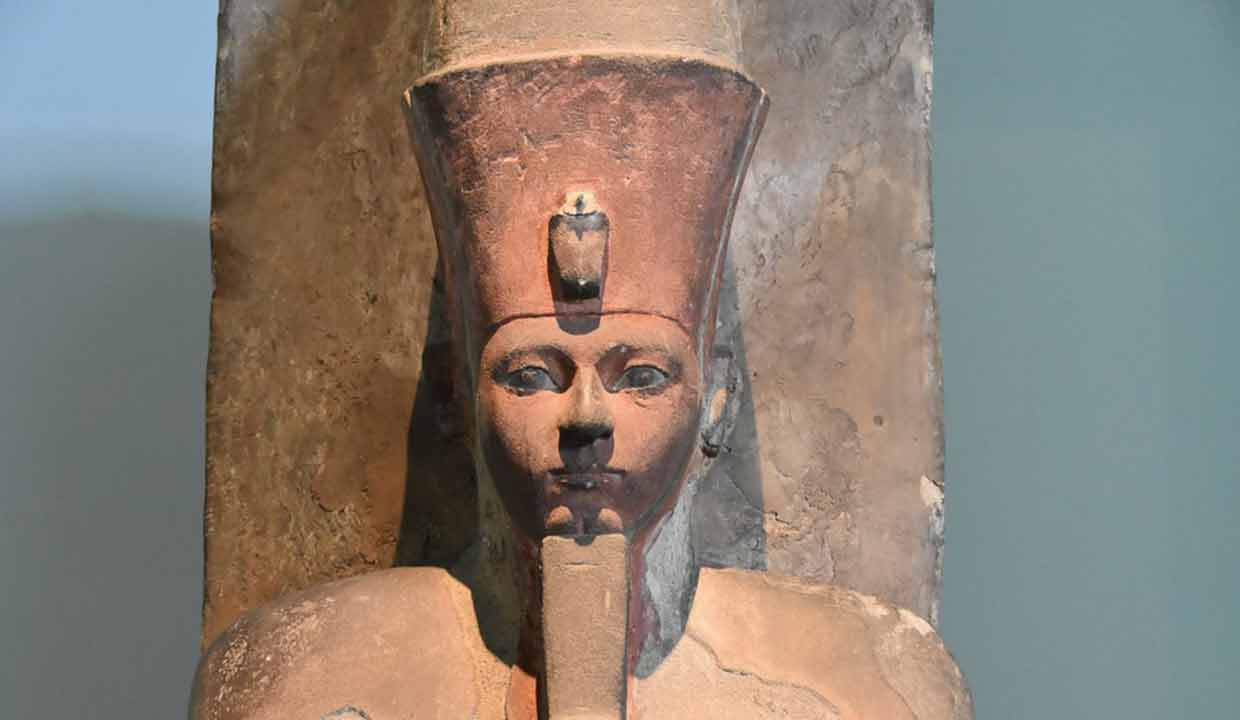Discover Amenhotep I: A luminary who ascended from warrior might to timeless divinity’s heights.
Amenhotep I, though not as universally recognized as Tutankhamun or Ramses II, stands out as one of Ancient Egypt’s noteworthy rulers. Hailing from the Eighteenth Dynasty, this pharaoh played a significant role in establishing foundations for the prosperous period known as the New Kingdom. Here, we delve into the life and reign of Amenhotep I, highlighting his contributions to Egyptian art, architecture, and religious life.
Early Life and Ascension
Amenhotep I was born to Pharaoh Ahmose I and Queen Ahmose-Nefertari. Ahmose I is credited with expelling the Hyksos, foreign rulers who had occupied the northern part of Egypt, and thus reuniting Egypt. As the successor to this legacy, Amenhotep I had both a great responsibility and a strong foundation.
Reign and Achievements
Amenhotep I’s reign, from around 1525 to 1504 BCE, is characterized by both peaceful relations and vast construction projects.
- Military Endeavors: While his father was noted for his military campaigns, Amenhotep I maintained relatively peaceful relations with neighboring states, only leading a few minor campaigns in Nubia.
- Architectural Projects: Amenhotep I initiated numerous construction works. He commissioned temples in Thebes and at the Karnak Temple Complex, enhancing the structures and grandeur of these religious centers. He also started the construction of a funerary complex at Dra’ Abu el-Naga’, though it wasn’t used as his final resting place.
- Deir el-Medina: One of his most notable contributions was the establishment of Deir el-Medina, a village for the workers and artisans who built and decorated the tombs in the Valley of the Kings. This settlement provides invaluable insights into the daily lives, beliefs, and social structures of New Kingdom artisans.
Religious Reverence
Though all Pharaohs played a significant role in the religious affairs of Ancient Egypt, Amenhotep I gained posthumous reverence as a deity. Along with his mother, Queen Ahmose-Nefertari, he was deified and worshipped by the inhabitants of Deir el-Medina. Both were seen as the patron deities of the village and the Theban necropolis, ensuring the well-being of the artisans and their craft.
Mystery of His Burial
While Amenhotep I began constructing a tomb for himself in Dra’ Abu el-Naga’, he was eventually interred in another location. The exact position of his tomb remained a mystery until the late 19th and early 20th centuries when his mummy was identified in the Deir el-Bahari cache, where priests had relocated several royal mummies for protection.
Legacy
Amenhotep I’s legacy is multi-faceted. As a Pharaoh, he further stabilized and enriched an empire reunified by his father. His architectural initiatives set a precedent for the monumental projects that characterized the New Kingdom. And his deification speaks to his profound impact on the religious landscape of Thebes.
Conclusion
In the tapestry of Ancient Egyptian history, Amenhotep I shines as a ruler who, despite a relatively short reign, left an indelible mark on the political, architectural, and religious spheres. His contributions not only set the stage for the golden age of the New Kingdom but also ensure that his name remains etched in the annals of one of history’s most enigmatic civilizations.
